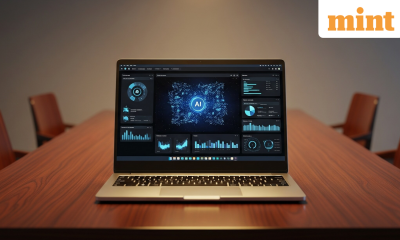
Metaverse
The dawn of the omnistar – Crypto News
Computers have spent decades disrupting humdrum jobs. Now artificial intelligence (AI) is coming for the most glamorous ones. Hollywood has been at a standstill for half the year, until studios agreed on November 8th to offer striking stars protection from robotic rivals. Living artists were nudged down this week’s music charts by a dead Beatle, resurrected by AI. Actors like Scarlett Johansson and authors like John Grisham are suing tech firms over the unauthorised use of their image and words.
Stars may worry that AI is stealing their work and giving less talented performers the skills to snatch their audience. In fact, the famous folk complaining the loudest about the new technology are the ones who stand to benefit the most. Far from diluting star power, AI will make the biggest celebrities bigger than ever, by allowing them to be in all markets, in all formats, at all times. Put your hands together—or insert your earplugs if you prefer—for the rise of the omnistar.
This is not the first time that technology has changed the rules of the fame game. People began to talk of stars in the 18th century, after the spread of reading made it possible to be truly famous within your lifetime. Film and radio initially seemed like a threat to stars, who worried that their live performances would be devalued. In fact, those technologies ushered in the era of the superstar, a term that caught on in the 1920s. A similar panic greeted the invention of television (and led to the last big Hollywood strike, in 1960). But again, the new tech made the famous even more so, bringing them into every living room. By the 1960s people were talking of megastars.
As AI-generated content floods into the entertainment business, the hardworking folk of Malibu are worrying once more that their fame will be diluted—and again, the outcome is likely to be the opposite. One of the paradoxes of the internet age is that, even as uploads to YouTube, TikTok and the like have created a vast “long tail” of user-made content, the biggest hits by the biggest artists have become even bigger. The number of musicians earning over $1,000 a year in royalties on Spotify has more than doubled in the past six years, but the number earning over $10m a year has quintupled. Even as niche content thrives—sea shanties, whistling and all kinds of eccentricities—Taylor Swift is marching through the most lucrative concert tour in history. It is the mid-ranking artists who have suffered.
Similar patterns hold across entertainment. The number of feature films released each year has doubled in the past two decades, but the biggest blockbusters have simultaneously doubled their share of the total box office. A tide of self-published books has not eroded the sales of star writers. In a sea of choice audiences rely more on recommendations, both algorithmic and human, which funnel them towards the most popular content. AI promises even more choice, and thus even higher search costs for audiences, who will continue to gravitate to the handful of stars at the top.
AI will give these megastars the ability to be truly omnipresent for their fans. AI-powered dubbing is already allowing actors and podcasters to speak to foreign audiences instantly and in their own voice. It will soon be standard for video to be edited so that their lips match the new language, too. In-demand actors may get more work because AI removes the perennial Hollywood problem of crowded schedules, allowing stars to perform alongside each other while not being together at all. Digital Botox will increase actors’ shelf-life and even enable them to perform posthumously. Disney has acquired the rights to the voice of James Earl Jones, 92, so that Darth Vader can scare children for generations to come.
Everything, everywhere, all at once
Stars will also be able to perform for fans in formats that are only beginning to emerge. The ABBA avatars that sell out a London arena seven times a week, and the celebrity-voiced chatbots recently launched by Meta, are just a taste of the ways in which the biggest stars will be able to satisfy—and monetise—their fans.
These opportunities come with strings attached. Artists are right to worry about copyright, which must be protected if AI is not to become a legalised form of piracy. Past technologies were no different: the printing press led to the first copyright laws in the 18th century; royalty payments were rejigged in the 1960s to compensate big-screen actors whose work was shown on TV; the musical free-for-all unleashed by companies like Napster at the turn of the century eventually gave way to deals between streamers and record companies. Content creators have legitimate questions about permission and payment (we declare an interest here). Until those are answered, AI will be a legal Wild West.
The bigger question is how the age of the omnistar will suit audiences. The risk is boredom. AI is brilliant at remixing and regurgitating old material, but less good at generating the pulse-racing, spine-tingling stuff that is, for now, a human speciality. AI output may nonetheless appeal to film studios, record labels and other creative middlemen, who prefer to minimise risk by sticking to tried-and-tested ideas. Hollywood already favours franchises over new work: witness the rash of sequels and reboots at the box office. AI will let studios apply the same principle to actors. A de-aged Luke Skywalker stars in Disney’s latest “Star Wars” spin-off. At present, audiences are wowed by such trickery. They may grow tired of it long before “Fast and Furious 94″.
Yet the entertainment market is strongly self-correcting. Audiences have the power to turn a hot property into a has-been in an instant, as stars are all too aware. And even as AI-powered entertainment grows, consumers still seem to relish human drama. Sport, perhaps the most AI-proof, flesh-and-bones spectacle there is, has seen its value to media companies soar in recent years (meanwhile, no one watches computer-powered chess, though its best players could beat any human). Moreover, AI will make entertainment’s long tail even longer, with deeper niches and more personalised content. In the AI age, audiences will face heavy bombardment from a handful of omnistars, from Taylor Swift to Darth Vader. But it will be easier than ever for them to change the channel.
© 2023, The Economist Newspaper Limited. All rights reserved. From The Economist, published under licence. The original content can be found on www.economist.com
-

 Blockchain1 week ago
Blockchain1 week agoXRP ETFs Listed On DTCC Ahead Of Possible Launch – Crypto News
-
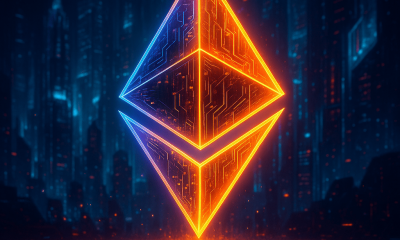
 Blockchain1 week ago
Blockchain1 week agoEthereum (ETH) Holds Strong as Analysts Target $4,400 Despite ETF Outflows – Crypto News
-

 Cryptocurrency6 days ago
Cryptocurrency6 days agoVanEck’s Solana ETF nears launch after SEC 8-A filing – Details – Crypto News
-

 Cryptocurrency6 days ago
Cryptocurrency6 days agoVanEck’s Solana ETF nears launch after SEC 8-A filing – Details – Crypto News
-
Technology1 week ago
Breaking: Coinbase Launches Token Sales Platform for Retail Investors – Crypto News
-
Business5 days ago
December Fed Meeting 2025: Rate Cut or Hold? Key levels to Watch – Crypto News
-
Business1 week ago
Breaking: Coinbase Launches Token Sales Platform for Retail Investors – Crypto News
-

 De-fi7 days ago
De-fi7 days agoZEC Jumps as Winklevoss‑Backed Cypherpunk Reveals $100M Zcash Treasury – Crypto News
-

 Metaverse1 week ago
Metaverse1 week agoWhat’s in India’s first AI rulebook? – Crypto News
-
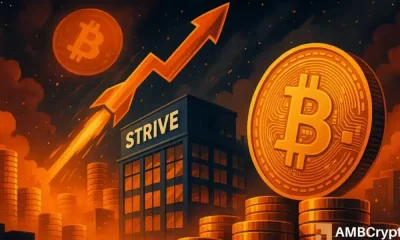
 Cryptocurrency1 week ago
Cryptocurrency1 week agoHow Strive’s $162M Bitcoin bet could make it the next MicroStrategy – Crypto News
-
others5 days ago
December Fed Meeting 2025: Rate Cut or Hold? Key levels to Watch – Crypto News
-

 Metaverse5 days ago
Metaverse5 days agoClaude Desktop is your new best friend for an organized PC – Crypto News
-
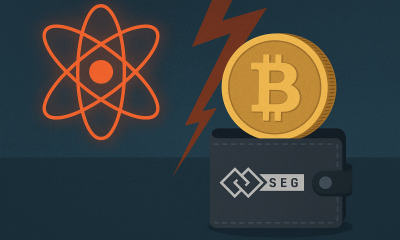
 Cryptocurrency1 week ago
Cryptocurrency1 week agoBitcoin faces quantum risk: why SegWit wallets may offer limited protection – Crypto News
-

 De-fi6 days ago
De-fi6 days agoKraken’s xStocks Hit $10B in Total Trading Volume – Crypto News
-

 Blockchain1 week ago
Blockchain1 week agoSquare Enables Bitcoin Payments for Sellers – Crypto News
-

 De-fi1 week ago
De-fi1 week agoBitcoin Hovers Around $105,000 as Government Shutdown Progress Lifts Markets – Crypto News
-
others1 week ago
Breaking: Canary XRP ETF Gets Approval with 8-A Filing to List on Nasdaq – Crypto News
-

 Metaverse1 week ago
Metaverse1 week agoYour deep research tool may save you time, but can it save you embarrassment? – Crypto News
-

 De-fi1 week ago
De-fi1 week agoXPL Rallies After Plasma Reveals Collaboration with Daylight Energy – Crypto News
-

 De-fi1 week ago
De-fi1 week agoSKY Surges 14% as Savings TVL Passes $4 Billion – Crypto News
-

 Metaverse5 days ago
Metaverse5 days agoClaude Desktop is your new best friend for an organized PC – Crypto News
-

 Technology1 week ago
Technology1 week agoEU Eyes Banning Huawei From Mobile Networks of Member Countries – Crypto News
-

 De-fi1 week ago
De-fi1 week agoMonad Faces Community Backlash After Unveiling Tokenomics – Crypto News
-

 others1 week ago
others1 week agoGold retreats from three-week high but retains bullish outlook – Crypto News
-
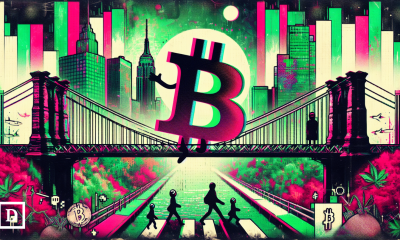
 De-fi1 week ago
De-fi1 week agoThreshold Network Upgrades tBTC Bridge to Link Institutional Bitcoin with DeFi – Crypto News
-

 De-fi1 week ago
De-fi1 week agoEthereum Sees First Sustained Validator Exit Since Proof-of-Stake Shift – Crypto News
-

 Cryptocurrency1 week ago
Cryptocurrency1 week agoXRP’s Big Moment? Why Nov. 13 Could Be the Day Ripple Investors Have Waited For – Crypto News
-

 De-fi1 week ago
De-fi1 week agoTrump Tokens Outperform After US President Teases ‘Tariff Dividends’ – Crypto News
-

 Metaverse1 week ago
Metaverse1 week agoFoxconn reports strong Q3 profit driven by AI server boom, teases OpenAI announcement – Crypto News
-
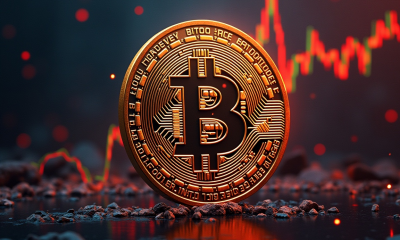
 Cryptocurrency1 week ago
Cryptocurrency1 week agoBitcoin (BTC) battles macro headwinds despite improved ETF inflows – Crypto News
-

 Blockchain6 days ago
Blockchain6 days agoWhy the Future of Blockchain Payments Could Stay Narrow – Crypto News
-
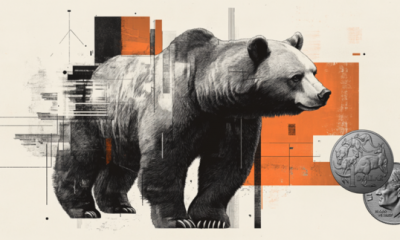
 others1 week ago
others1 week agoAustralian Dollar loses ground despite stronger Westpac Consumer Confidence – Crypto News
-
others1 week ago
Bitcoin News: BTC Exchange Reserves Fall as Tether Mints $1B USDT – Crypto News
-

 Blockchain1 week ago
Blockchain1 week agoXRP Price Resumes Uptrend Amid Renewed Market Optimism and Whale Activity – Crypto News
-

 De-fi1 week ago
De-fi1 week agoInstitutional Sentiment is Turning Bearish on Crypto: Sygnum – Crypto News
-
Cryptocurrency1 week ago
Can Dogecoin Price Hold Above $0.17 Amid Weekly Surge? – Crypto News
-

 Technology1 week ago
Technology1 week agoChinas cryptoqueen jailed in UK over $6.6 billion Bitcoin scam – Crypto News
-
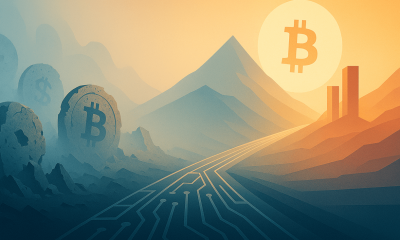
 Blockchain1 week ago
Blockchain1 week agoBitcoin Path To $1 Million Clears With OG Sellers Fading: Weisberger – Crypto News
-
Technology1 week ago
Breaking: USDC Issuer Circle Explores Native Token for Arc Network – Crypto News
-
others1 week ago
Hyperliquid Halts Deposits and Withdrawals Amid POPCAT Liquidation Saga – Crypto News
-
Business1 week ago
Hyperliquid Halts Deposits and Withdrawals Amid POPCAT Liquidation Saga – Crypto News
-

 De-fi1 week ago
De-fi1 week agoFlare TVL Nears Record High as Firelight Teases XRP Liquid Staking – Crypto News
-

 Cryptocurrency1 week ago
Cryptocurrency1 week agoAI-driven phishing scams and hidden crypto exploits shake Web3 security – Crypto News
-

 De-fi6 days ago
De-fi6 days agoXRP Surges as First US Spot ETF Debuts on Nasdaq – Crypto News
-

 Cryptocurrency6 days ago
Cryptocurrency6 days agoUAE makes Bitcoin wallets a crime risk in global tech crackdown – Crypto News
-

 De-fi5 days ago
De-fi5 days agoBitcoin Drops to $94,000 Following Second-Largest Daily ETF Outflows – Crypto News
-

 De-fi5 days ago
De-fi5 days agoBitcoin Drops to $94,000 Following Second-Largest Daily ETF Outflows – Crypto News
-

 Technology4 days ago
Technology4 days agoPerplexity faces harsh crowd verdict at major San Francisco AI conference: ‘Most likely to flop’ – Crypto News
-
Business1 week ago
Arthur Hayes Buys UNI as CryptoQuant CEO Says Supply Shock ‘Inevitable’ for Uniswap – Crypto News
-
Business1 week ago
U.S. Government Shutdown Set to End as House Panel Approves Senate Funding Deal – Crypto News

